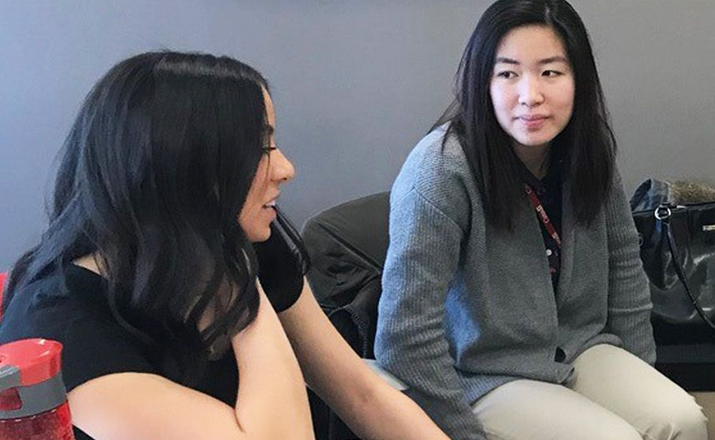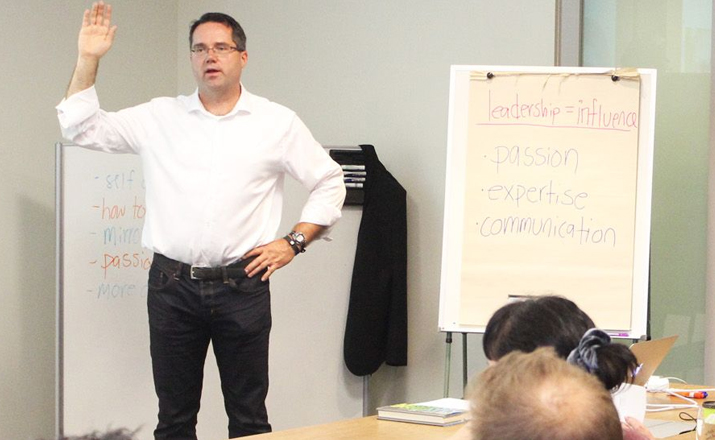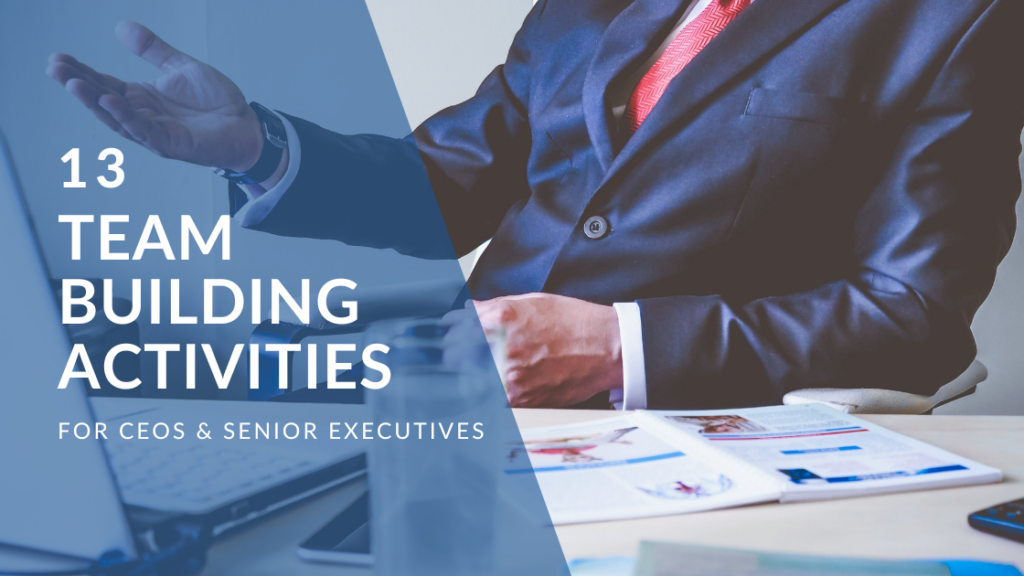5 Ways a Diverse Workforce Impacts Employee Training and Development

Diversity is a key component of effective employee training and development. And, in this guest article from Derek Jones, you’ll learn how diversity impacts employee training and development as well as how to ensure a successful inclusion and diversity program.
Training and development are pivotal for organizations if they want their workforce to broaden their skills and knowledge and grow in their position. A significant component of training and development is to provide fair treatment and opportunities to all employees.
And ultimately, the stronger the skillset and knowledge of the team members, the more successful an organization will be.
In this article, you’ll learn why diversity matters as well as how you can support it within your organization.
- 5 Ways Diversity Impacts Employee Training and Development
- Improved Company Performance
- Higher Employee Retention
- Open and Honest Dialogue
- Quality Decision-Making
- Reduced Turnover And Higher Engagement
- How To Ensure A Successful Inclusion And Diversity Program
- 3 Training and Development Programs to Build Stronger Teams
5 Ways Diversity Impacts Employee Training and Development

Conducting diversity training in your workplace can equip each employee with the tools and resources to respect one another while being more accepting of different cultures.
This training also gives the employers a better understanding of why employees have different perspectives and why they matter, helping their team gain mutual respect and come together in the workplace.
Improved Company Performance
Organizations with diverse workforces outperform organizations that don’t, and companies grow when their employees receive adequate training and development opportunities.
In fact, a recent study predicts that during 2022, 75% of the firms with inclusive and diverse decision-making teams will exceed their financial targets. Also, the study showed that inclusive and gender-diverse groups outpaced their less inclusive counterparts (50%).
According to the World Economic Forum, companies with above-average scores in diversity can drive 45% of their revenue from innovation, while others with below-average scores drive only 26%.
When employees and teams are in an inclusive work setting, they learn to interact effectively with people with different values, beliefs, and attitudes.
For instance, L’Oréal, a cosmetic giant, attributes its impressive success in leading markets specifically to its multi-cultural product development teams. This is because diverse teams there welcome and appreciate multiple perspectives, personalities, and voices – which gives rise to exceptional and out-of-the-box thinking.
By offering its members an interactive and engaging platform, L’Oréal fosters a culture that is open to the exchange of ideas. As a result, they reap the significant benefits of workplace diversity.
A recent Forbes study echoed this notion, saying that the optimal way to guarantee the generation of new ideas is through an inclusive and diverse workforce because it drives innovation and inspires creativity.
Higher Employee Retention

Research found that culture, employee engagement, and morale thrive in inclusive and diverse workplaces.
In a survey conducted by Deloitte, 83% of millennials stated higher engagement levels when their organization fosters an inclusive culture. In a study that Yello conducted (2019), 70% of the respondents consider finding a new job if employers didn’t exhibit a commitment to inclusion and diversity.
Organizations with a diverse workforce are usually more inclusive and appreciative of distinct perspectives and characteristics among their workforce. Moreover, inclusion and diversity in the workplace make employees feel valued and accepted, leading to greater on-the-job satisfaction.
Due to this reason, companies with a diverse workforce have lower turnover rates. When you are committed to diversity, your employees feel a sense of belonging and actually like coming to work.
Open and Honest Dialogue
Fostering an open culture where diverse groups (decision-makers and individuals) can freely voice and express their ideas can bring together diverse perspectives, tearing down biases and creating rich discussions.
A diverse and inclusive workplace leads to increased innovation amongst your team. Different perspectives in leadership roles can foster an environment where distinct ideas are heard and welcomed. People bring their experiences and background to brainstorming sessions. Also, other team members can leverage their knowledge and expertise to build on innovative ideas.
Creativity, idea generation, and brainstorming are consistently elevated with diverse inputs since everyone comes with their perspective and strengths. A group brainstorming session can help yield better results as compared to individuals brainstorming on their own.
For example, a team that consists of people from multiple cultures. In a multinational company, this team can include members from the United States, Japan, India, Egypt, South Africa, and Russia—all working collectively to bring their individual opinions, skills, cultural experiences, and views together to increase productivity and solve problems.
This example isn’t just limited to a multinational company, either! An organization doing business in a single country can also make a diverse team by hiring people from different ethnicities or internal regions. Your employees are likely to have different opinions based on their circumstances, and thus it can bring in more options.
This all leads to better performance and more innovation on a team. The wide variety of abilities and skillsets associated with your workplace diversity also directly contributes to increased productivity.
Quality Decision-Making

A white paper by an online decision-making platform found a direct link between decision-making and workplace diversity – when teams are diverse and make a business decision, they outperform individual decision-makers 87% of the time.
The decision-making process and the overall outcomes are better when you promote a diverse work culture. There’s no denying that a team can make relatively better and improved problem-solving decisions than an individual employee.
Each team member offers a different perspective and idea, unique skill set, knowledge base, and indulgences than every other employee. Employees see the company and the world’s issues through their unique lens.
Various experiences and inputs are incredibly valuable, especially when diverse companies seek the most efficient and effective processes to generate an optimal ROI, or critical metrics, gaining a competitive edge in the market.
Reduced Turnover And Higher Engagement
Workplace diversity is critical for training and development as well as employee retention. Organizations with diverse teams are usually more inclusive of various individual perspectives and characteristics, leading to higher employee engagement.
According to Deloitte’s study, workforce diversity boosts employee engagement and company achievement. Proper communication interlocked with diversity programs increases the commitment and accountability of employees.
Similarly, deploying comprehensive employee scheduling software via human resource management is an effective way to ensure everyone knows their duties and responsibilities, including but not limited to:
- Keeping up with the clients’ deadlines
- Maximizing staff utilization
- Managing employee attendance
- Ensuring compliance requirements
- Improving communication and productivity
- Keeping track of employee vacations and company holidays
- Managing performance
It provides a bottom-line and strategy roadmap for all employees to remain accountable and engaged in a diverse workforce. When you streamline processes, it also helps you promote workplace inclusion.
How To Ensure A Successful Inclusion And Diversity Program

Companies can leverage inclusion and diversity training to create an open culture by raising unconscious bias awareness and setting the expectations for a good workplace.
According to McKinsey, there are demonstrable industry imperatives to building inclusive and diverse organizations. It is pivotal to harness an inclusive and diverse mindset through pieces of training to build successful and cohesive teams.
However, many companies run into ineffective inclusion and diversity training sessions. How can your company ensure genuine change? Learning and development teams have a few hurdles to overcome to provide effective and successful training programs.
Here are some things to prioritize to ensure you rebuild your training programs for a more inclusive and diverse organization.
Consistency
Inclusion and diversity training often follow a problem or incident that has already occurred. If that’s the case, your employees may see it as not genuine and inauthentic. Consistency is a crucial aspect here. Ensure you frequently integrate your inclusion and diversity training into your learning and development programs. Also, implementation is critical, and the session doesn’t necessarily need to be a conventional instructor-led
For example, Bayer, a German pharmaceutical and chemical company, is a successful global company and a perfect representation of utilizing multiple measures and practices. The company leverages eLearning modules to provide ongoing education to its employees. These resources are a great way to offer employees consistent reminders of the company’s expectations and values.
Presence of Leadership
A common issue when introducing inclusion and diversity training programs is the lack of direct involvement from managerial leadership. Teams can often be reluctant to change or think it’s impossible. Set an excellent example by directing from the top down.
Training programs should revolve around the latest developments in the diversity and inclusivity arenas. Remember – this is more than just a trend; it also leads to increased profitability and higher employee engagement.
Take necessary steps toward making sure your employees are an integral part of the organization by offering D & I training programs that honor and reflect the diversity amongst your teams.
L’Oréal’s CEO has to champion inclusion and diversity and act as a role model to demonstrate a business imperative. According to him, it is pivotal that the senior leadership implements inclusion and diversity. He believes that when executives own diversity and inclusion, making themselves a part of the inclusion and diversity management procedure, they can set the tone for all the organizational members to follow suit.
Leaders in inclusion and diversity models should clarify that the global environment empowers and promotes free speaking – there shouldn’t be an absence of leadership. It is imperative to encourage employees to raise their concerns against biases. If required, a culture should change to involve every employee. A global organization, Ford Motor Company, is catching on to the need for inclusive leadership and aims to utilize different perspectives and skills and respect each other.
3 Training and Development Programs to Build Stronger Teams
If you’re looking for training and development programs that can support a stronger and more inclusive team and organization, here are a few you might be interested in.
Conflict Resolution Training

This group skills training workshop will teach your team to manage and resolve conflicts with colleagues in a more productive and positive way.
Clear Communication

In this program, you can help develop your team’s verbal and written communication skills, including non-verbal communication signals, presentation skills, and eir ability to communicate effectively during conflicts and decisions.
Emotional Intelligence Training

With the Emotional Intelligence (EQ) leadership training and development program, you can develop your team’s self-awareness and social skills. This includes learning to increase self-awareness, self-regulate behaviors, develop better social skills for leadership, use emotionally intelligent motivators, and develop a greater sense of empathy.
To develop and sustain increasingly talented and diverse teams, it’s time to adopt more inclusive behaviors. Diversity is the first step, but inclusion is fundamental to leveraging diversity. Encourage annual training and don’t be fearful of letting your employees explore their negative and positive attitudes.
Want to Learn More About Training and Development Opportunities for Your Organization?
For more information about training and development programs to create a stronger team and organization, reach out to our Employee Engagement Consultants.
Author Bio:
Derek Jones, Vice President of Strategy, Americas, Deputy
Derek spearheads key initiatives at Deputy, a global workforce management platform for employee scheduling, timesheets, and communication. With a focus on workforce, Derek helps business owners and workforce leaders to simplify employment law compliance, keep labor costs in line, and build award-winning workplaces. Derek has over 16 years of experience in delivering data-driven sales and marketing strategies to SaaS companies like MarketSource and Griswold Home Care.




Comments